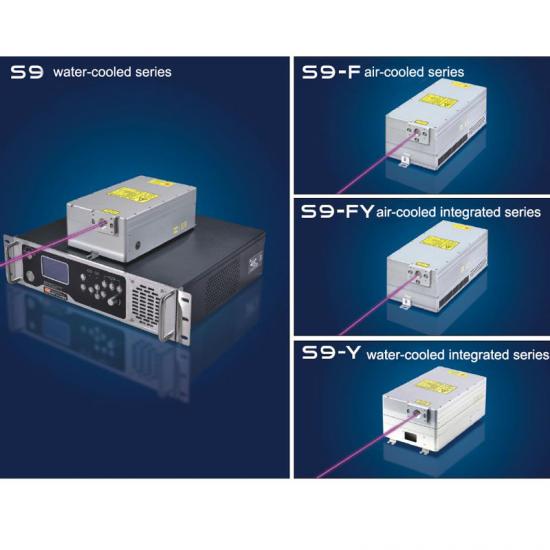Latest Blog
What is the difference between uv laser light than ordinary light
Sep 07 , 2021
Many people know the name of laser, but they don't understand laser. Today I will tell you about the four characteristics of laser compared with ordinary light.
Laser collimation, guidance and ranging are the use of this feature of good directivity.
1. Good directionality-ordinary light sources (the sun, incandescent lamps or fluorescent lamps) emit light in all directions, and the light emitting direction of the laser can be limited to less than a few milliradian solid angles, which increases the illuminance in the direction of illumination by tens of millions Times. The laser has a diffusion diameter of less than 1 meter per 200 kilometers. If it hits the moon 3.8×105 km away from the earth, the beam spreads less than 2 kilometers, while ordinary searchlights spread to tens of meters from a few kilometers away. For example, laser collimation, guidance, and ranging use the characteristic of good directivity.
Laser is the brightest light source of the time
2. High brightness ——Laser is the brightest light source in the contemporary era. Only the strong flash of the hydrogen bomb can be compared with it. The brightness of sunlight is about 1.865×109cd/m2, and the output brightness of a high-power laser can be 7 to 14 orders of magnitude higher than the brightness of sunlight. Although the total energy of the laser is not necessarily large, due to the high concentration of energy, it is easy to generate high pressure and high temperatures of tens of thousands of degrees Celsius or even millions of degrees Celsius at a tiny point. For example, practical applications such as laser drilling, cutting, welding, and laser surgery take advantage of this feature.
Good monochromaticity-light is an electromagnetic wave
3. Good monochromaticity-light is an electromagnetic wave. The color of light depends on its wavelength. The light emitted by ordinary light sources usually contains various wavelengths and is a mixture of light of various colors. Sunlight includes visible light in seven colors of red, yellow, green, cyan, blue, and purple, as well as invisible light such as infrared light and ultraviolet light. The wavelength of a certain laser is only concentrated in a very narrow spectral band or frequency range. For example, the wavelength of a HeNe laser is 632.8 nanometers, and its wavelength range is less than one ten-thousandth of a nanometer. For example, the good monochromaticity of laser provides an extremely advantageous means for precision instruments to measure and stimulate certain chemical reactions and other scientific experiments.
Interference is an attribute of wave phenomenon
4. Good coherence-Interference is an attribute of the wave phenomenon. Based on the characteristics of high directivity and high monochromaticity of laser light, it will inevitably be light with excellent coherence. This characteristic of laser makes holography a reality.

uv laser | green laser | Ultraviolet lasers | uv dpss laser | nanosecond laser | UV laser source | Solid State Lasers
laser technology
The so-called laser technology is the general term for exploring and developing various methods of generating laser light and exploring and applying these characteristics of laser light for the benefit of mankind.
For more than 50 years, laser technology and applications have developed rapidly, and have been combined with multiple disciplines to form multiple application technology fields, such as photoelectric technology, laser medicine and photon biology, laser processing technology, laser detection and measurement technology, laser holography technology, Laser spectrum analysis technology, nonlinear optics, ultrafast lasers, laser chemistry, quantum optics, lidar, laser guidance, laser isotope separation, laser controllable nuclear fusion, laser weapons, etc. The emergence of these intersecting technologies and new disciplines has made lasers play a vital role in many fields such as information, holography, and medical treatment, and has greatly promoted the development of traditional and emerging industries.